Georg Mühleck Artist
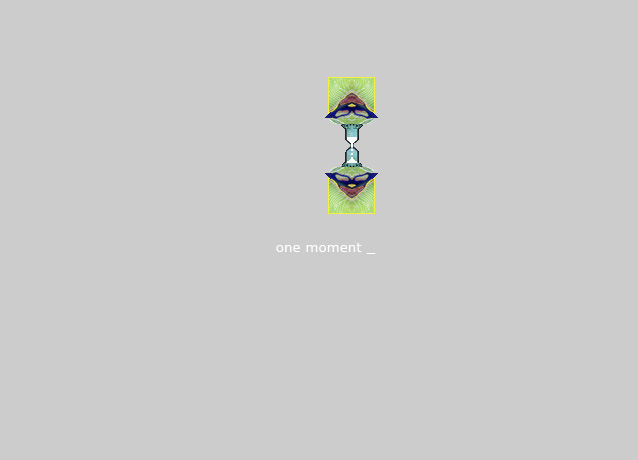
“Cellular Beauty Mini-Lab” 1993/2001
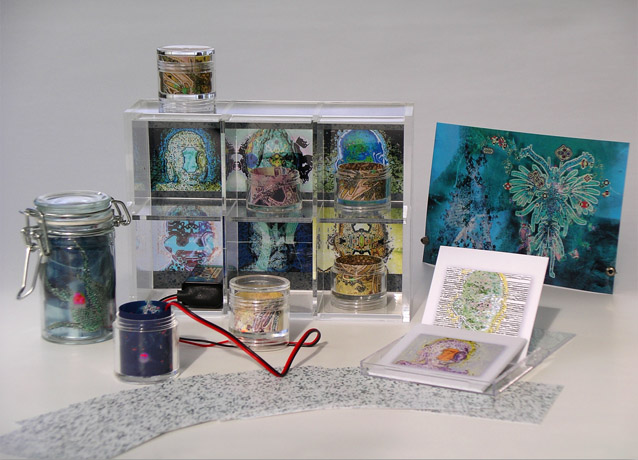
“(Remote) Mind — The strangers are still me” Video installation by Barbara Rauch and Georg Mühleck, music by Karin Krog; 2006 Undercroft, Stephen Lawrence Gallery, London UK
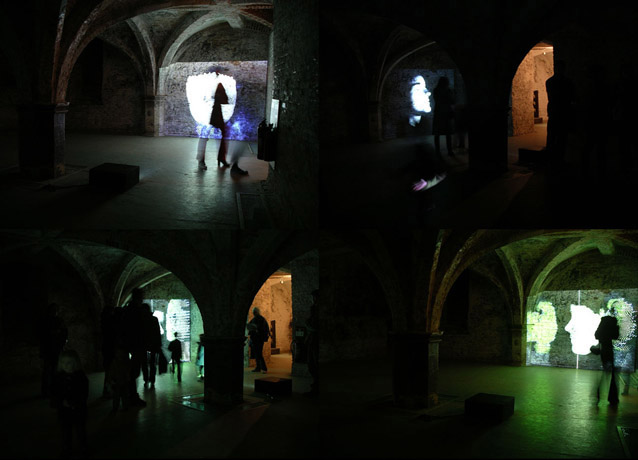
“hippoCAMPus” 1998, 15 tents; print on fabric, Galerie Manfred Rieker
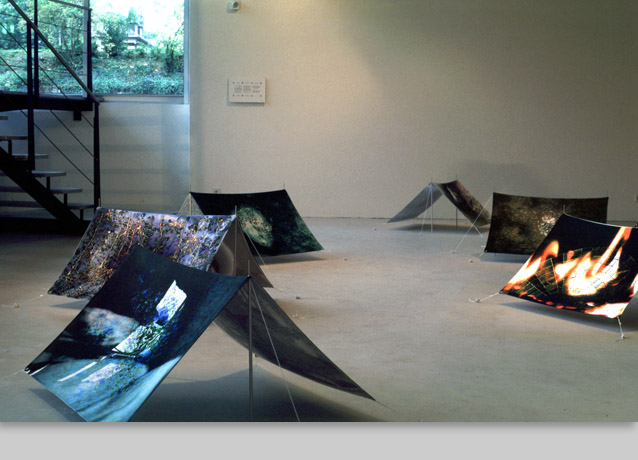
“inked kelpies 44_v2+04” (set 4) 2019, archival pigment on Hahnemühle
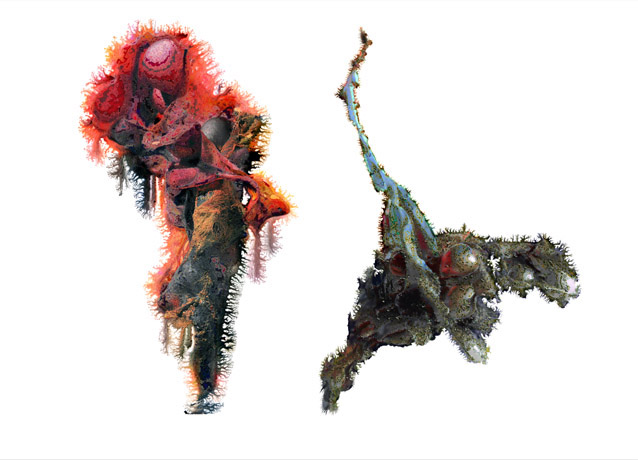
"The Pirate Art Process" digital thermal prints CX 5000, Galerie Rahmel, Köln 1990
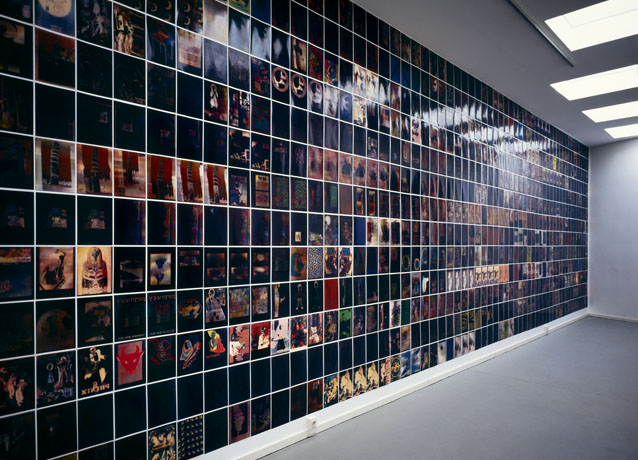
“armed arm” 1992/93, Cibachrome
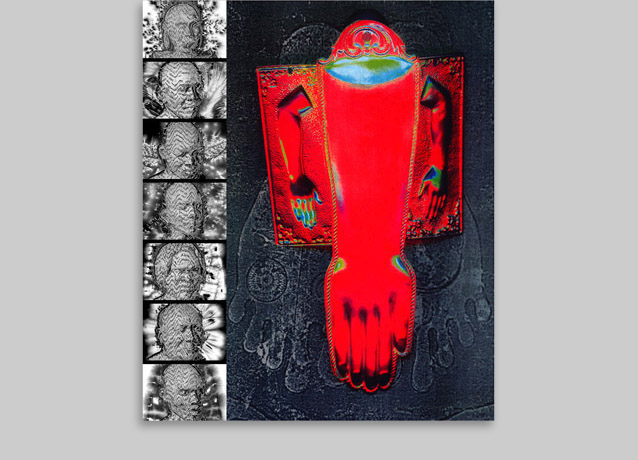
“(beautiful) data dump: information table” 1991, C-prints, Umatic video
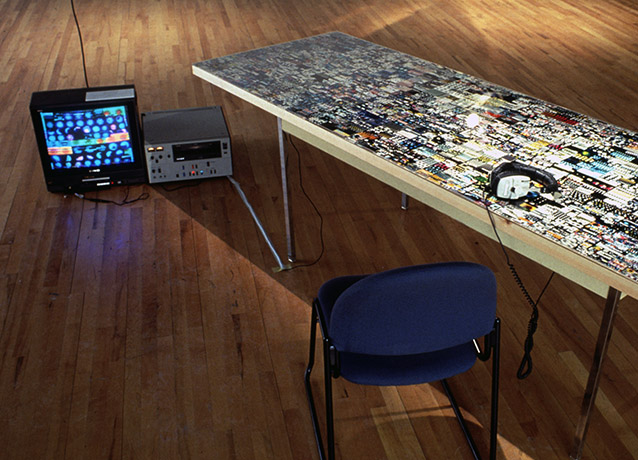
“swaying differentiated dish 2” 2011, archival pigment, Plexiglas
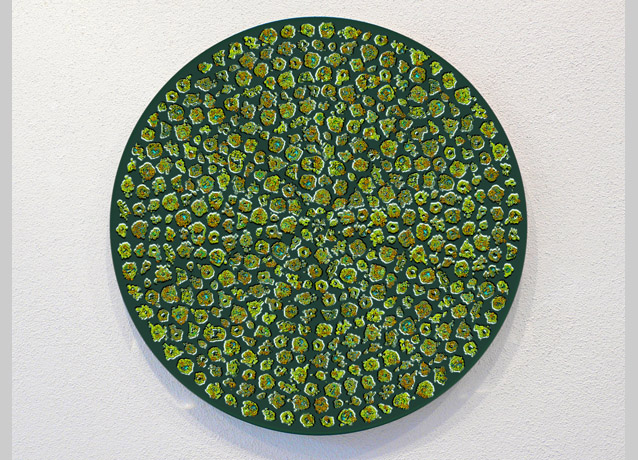
“two hatchet in wonderland” 1989, copigraphy CX5000
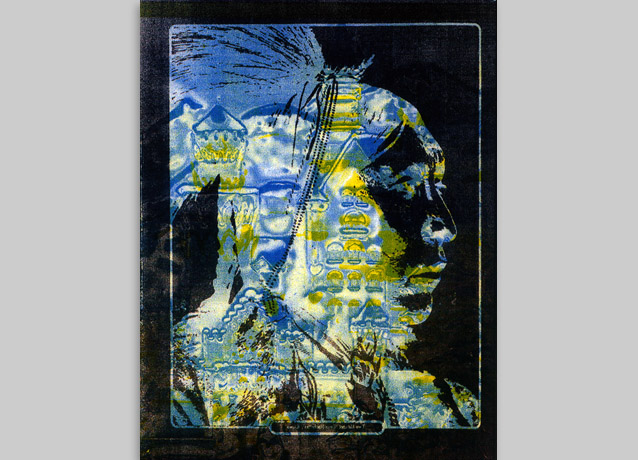
“music feedback” 1994, Ciba/Plexi, Musikschule Neckarsulm, architects: Bechler-Krummlauf
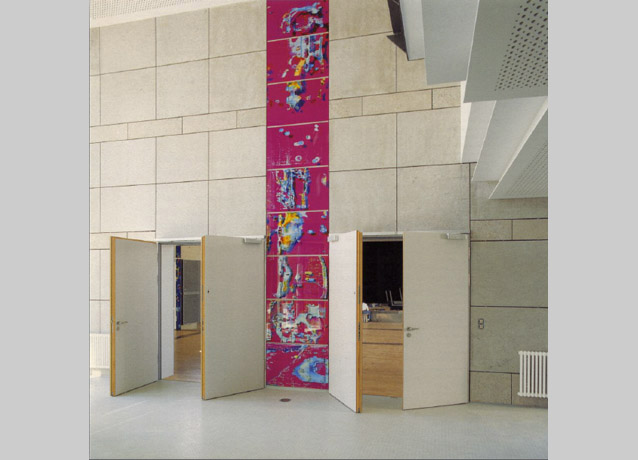
“caspecies 12A+12B” 2015, archival pigment on Arches
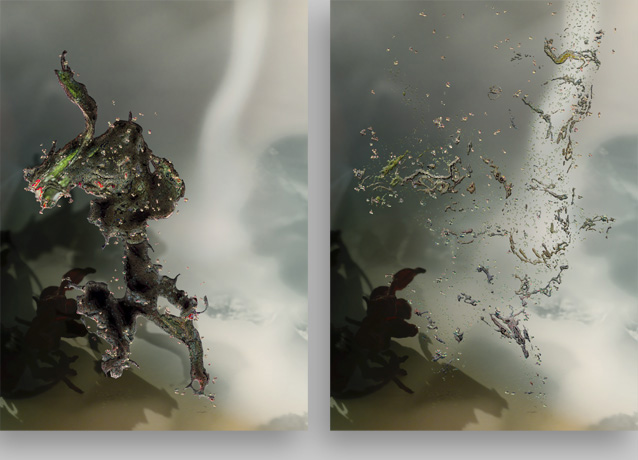
“caspecies 8 triptych v1C" (detail) 2015, archival pigment on Canson
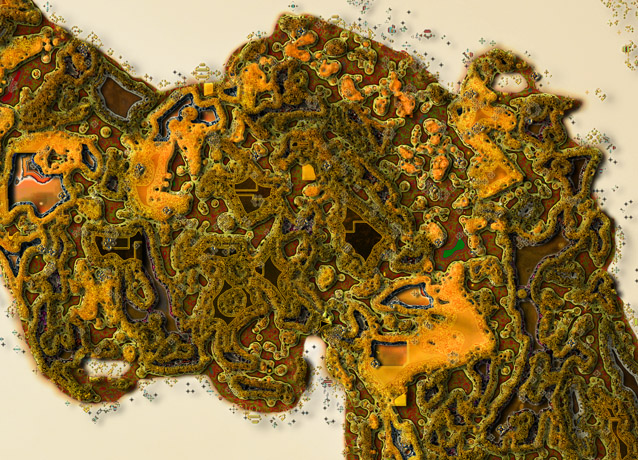
“mind bunker #1” 1999, Lysonic on Rough Fine Art paper
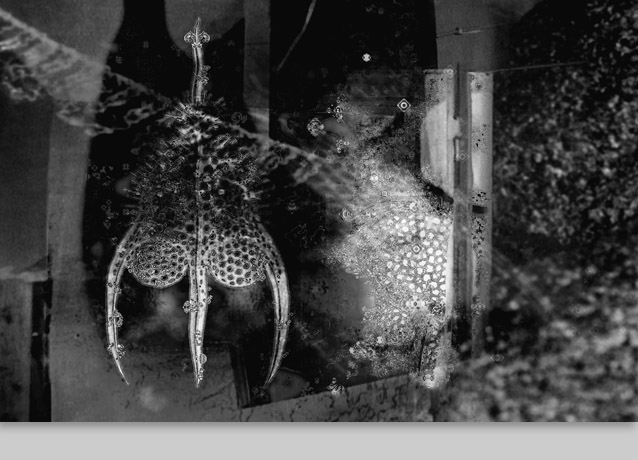
“Emotive Recall” video installation by Barbara Rauch + Georg Mühleck, Wrexham Arts Centre, UK 2003
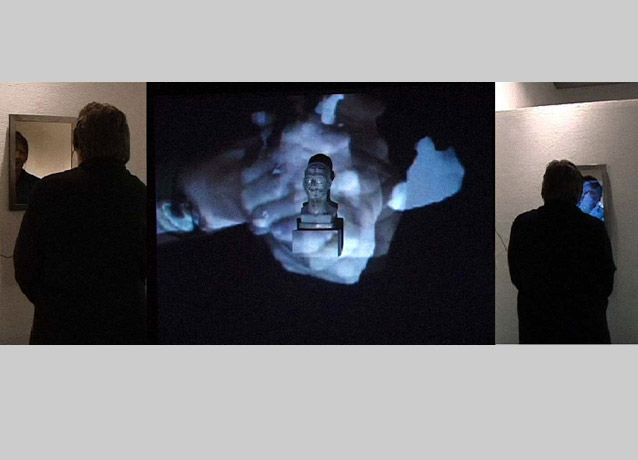
“Peripheral Kinetics” 2011, archival pigment, Plexiglas, Galerie Manfred Rieker
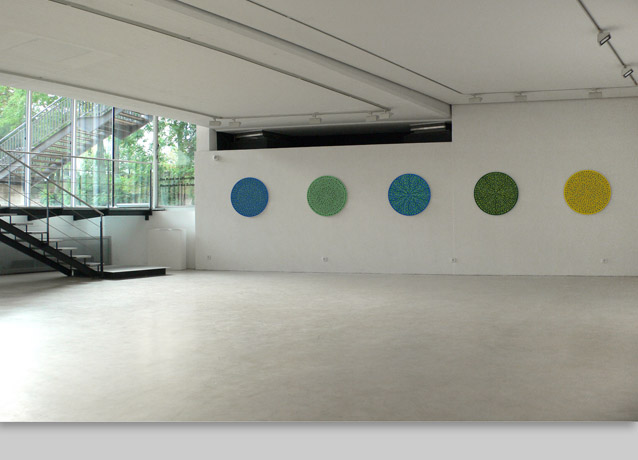
“Copies of nothing in Oct.1982 (Opera grey)” Copigraphy RX 6500
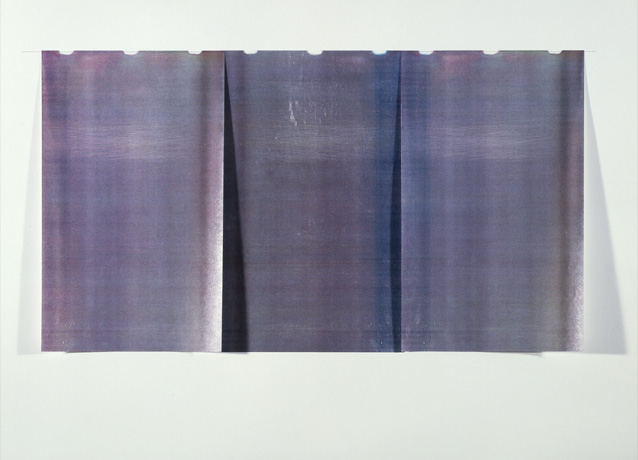
“(beautiful) data dump — part 18” 1991, thermal print UP-5000
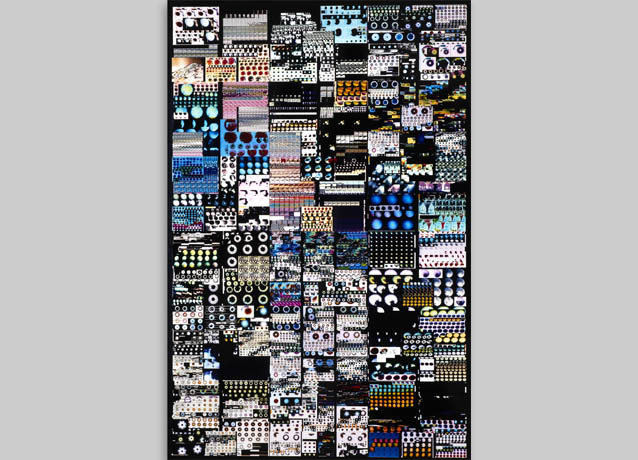
"200 views for ID match" detail 1994, offset+toner print
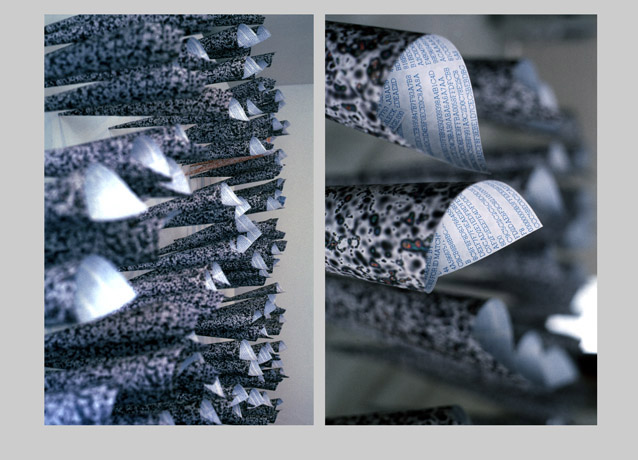
“match ID” 1993, 9 puzzles
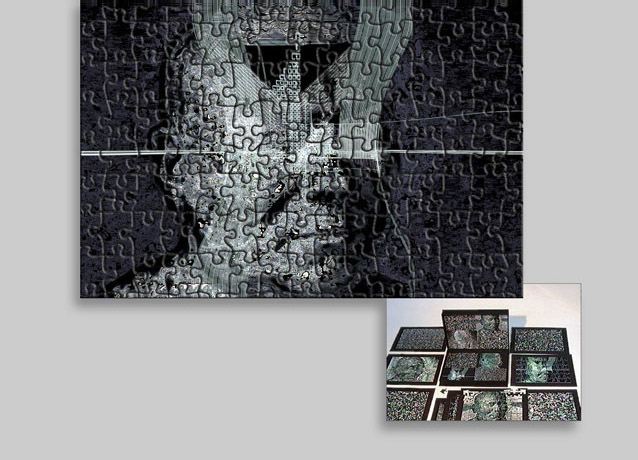
“caspecies 16” 2015, archival pigment on Canson
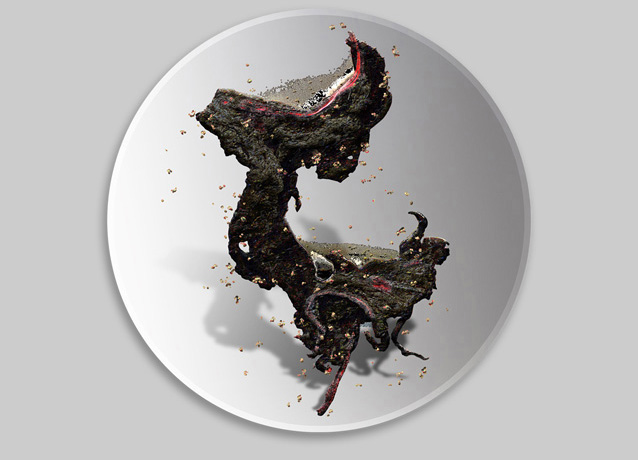
“mind bunker #8” 1999, Lysonic on Rough Fine Art paper
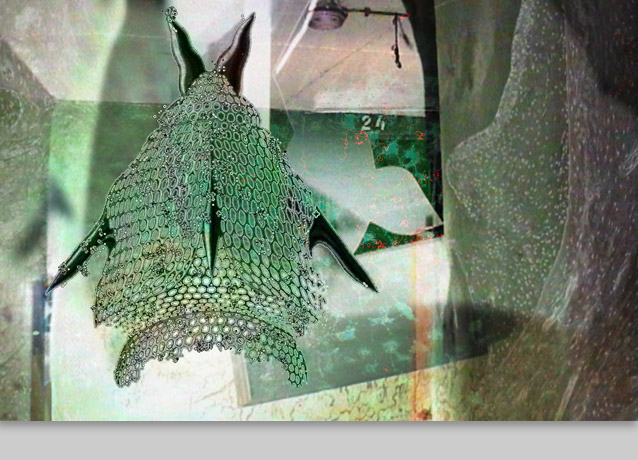
“copyman” 1989, Cibachrome 127 x 198 cm
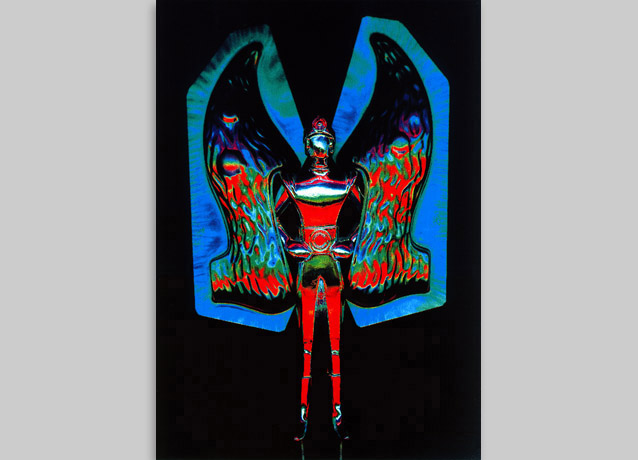
“The painting professor: pirate art process PP370” 1988, laminated Copigraphies CX-5000
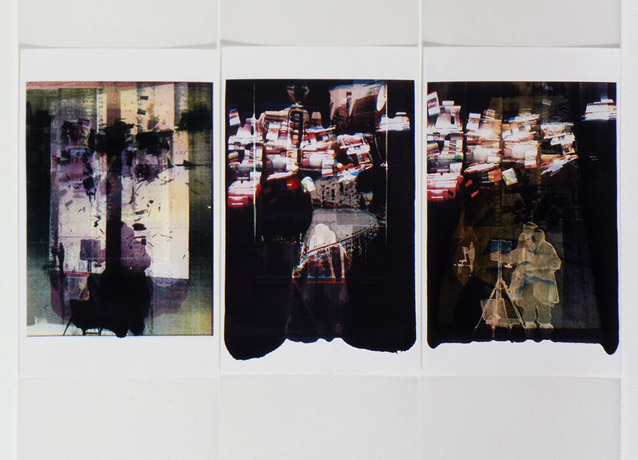
“Light Signal” 1986, Copigraphy RX 6500 on cotton paper
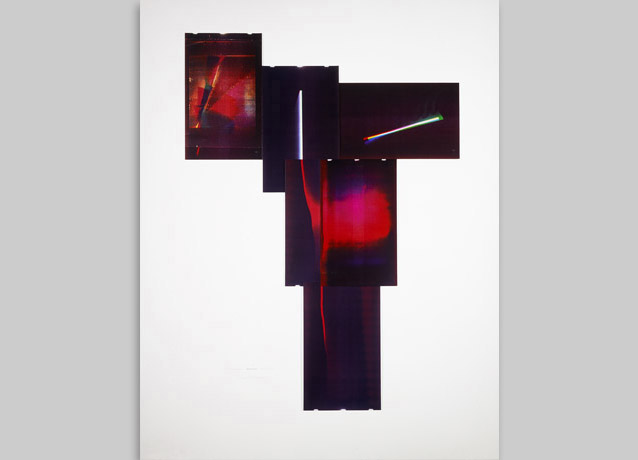
“mind bunker #11” 2000, Translucent C-Print in tray
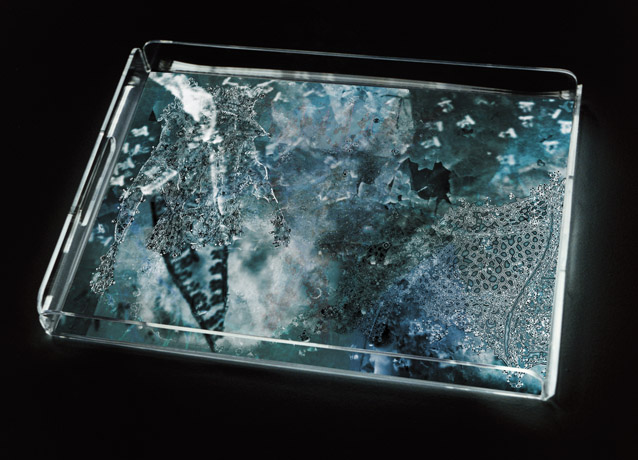
Part of “Enemat” 2007, Ilfochrome/Plexiglass, stainless steel
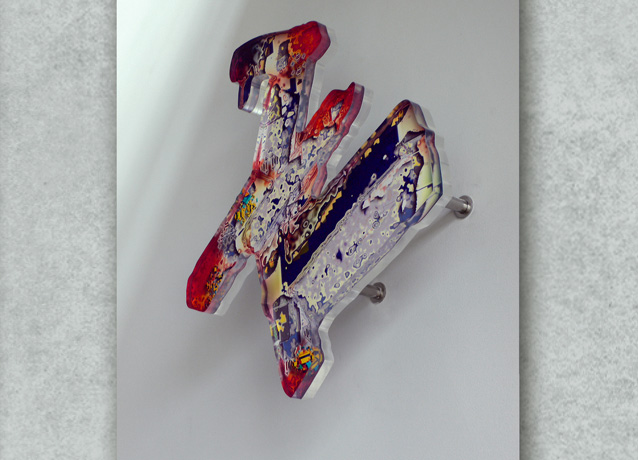
“Enemat” 2007, Ilfo/Plexi/stainless steel, Fraunhofer Gesellschaft; architects K.Lehmann, M.Schneider
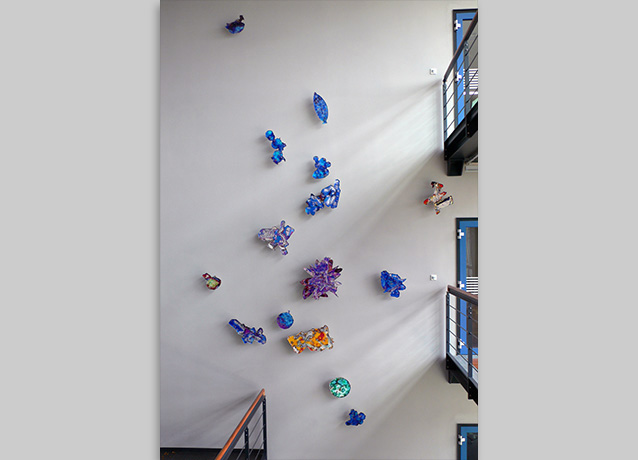
"fluid 14(k)" 2021, archival pigment on Hahnemühle 61x79cm, edition of 5 © Georg Mühleck
Note on the work process: The starting point for the fluid series have been photographs or scans taken from nature, their organisms serving as an ‘action space’ for cell cultures of synthetically generated life. Photography and algorithms create an image using computer models of Cellular Automata (cf. my work series Cellular Cultures-T, caspecies, and kelpies). Following the completion of these data graphs, some of them are subject to a process involving real, flowing ink. The digital work erodes under the impact of gravity on the ink. The sequence of this process is captured in photographs up to a point when the colour flow has become almost stagnant. One of the number of photographs is selected and printed with pigment ink on hand-made laid paper. What looks like painting, is in fact photography. The ‘digital fauna’ has continued to evolve. New beings, organisms, perhaps worlds have emerged. (Georg Mühleck, Juli 2021) ----------------------------------- "fluid" - Neue Wesen im Farbfluss, oder: die Einwirkung der Schwerkraft auf Tusche. Notiz zum Arbeitsprozess: Ausgangspunkt der Folge fluid sind Fotos oder Scans aus der Natur, deren Organismus als ‘Aktionsraum’ für Zellkulturen synthetisch generierten Lebens dient. Fotografie und Algorithmen finden zu einem Bild durch die Nutzung von Computermodellen Zellularer Automaten (siehe meine Arbeitsreihen Cellular Cultures-T, caspecies und kelpies). Nach Fertigstellung jener Datagrafien werden einige davon einem Prozess mit real fliessender Tusche ausgesetzt. Das digitale Werk erodiert unter der Einwirkung der Schwerkraft auf die Tusche. Die Abfolge dieses Prozesses wird fotografisch festgehalten, bis ein Punkt erreicht ist, an dem der Farbfluss nahe an einen Stillstand gekommen ist. Aus den entstandenen Fotos wird eines ausgewählt und mit Pigmenttusche auf Bütten ausgedruckt. Was aussieht wie Malerei, ist in Wirklichkeit Fotografie. Die ‘digitale Fauna’ hat sich weiterentwickelt. Neue Wesen, Organismen, vielleicht Welten sind entstanden. (Georg Mühleck, Juli 2021) ------- © Georg Mühleck - VG Bild-Kunst; mail@georgmuehleck.com; www.georgmuehleck.com; info@bildkunst.de; www.bildkunst.de
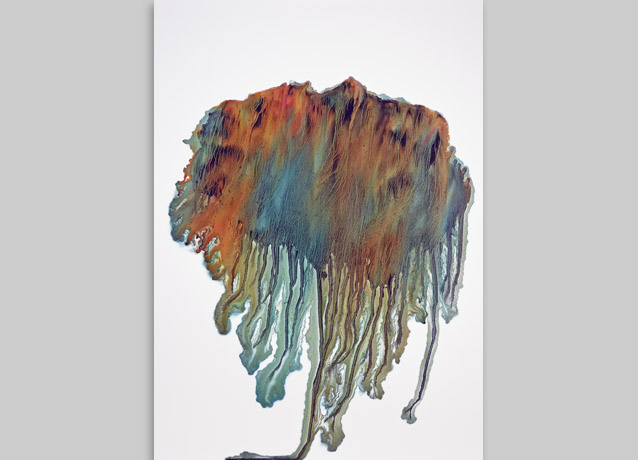
“princess” 1989, Cibachrome
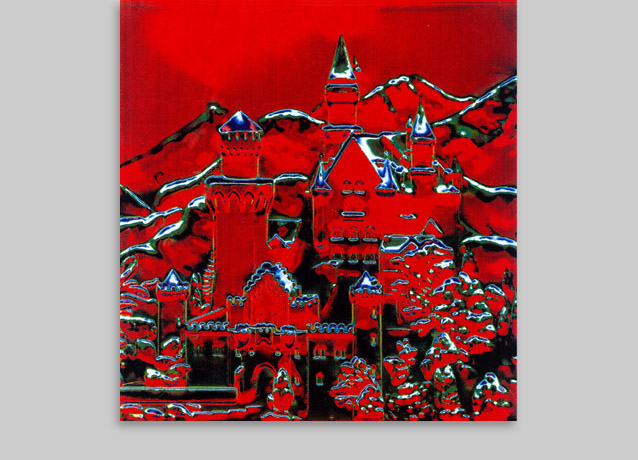
“Screen Heads — All Neighbours Normal (in the end)” 1993, CLC prints, aluminum
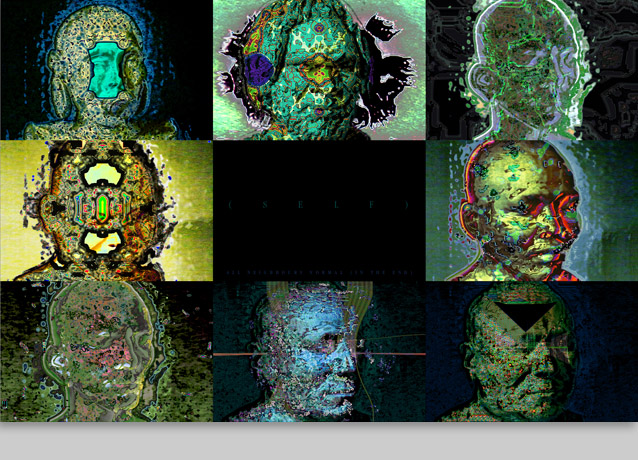
“staged caspecies 11” (2 groups of seven) 2015, archival pigment on Canson
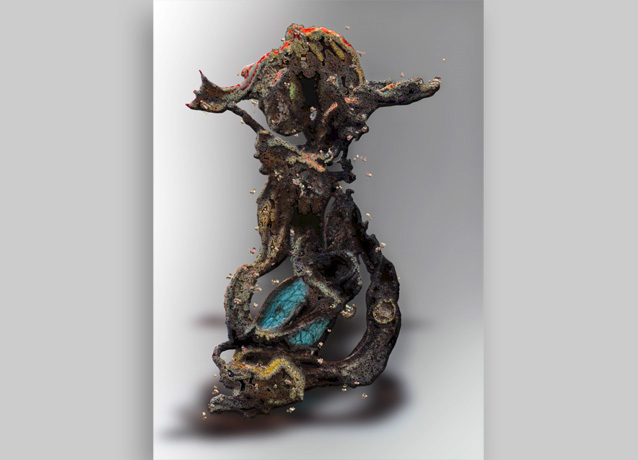
“Cellular Cultures (T)” 2009, artistbook, archival pigments on Moab
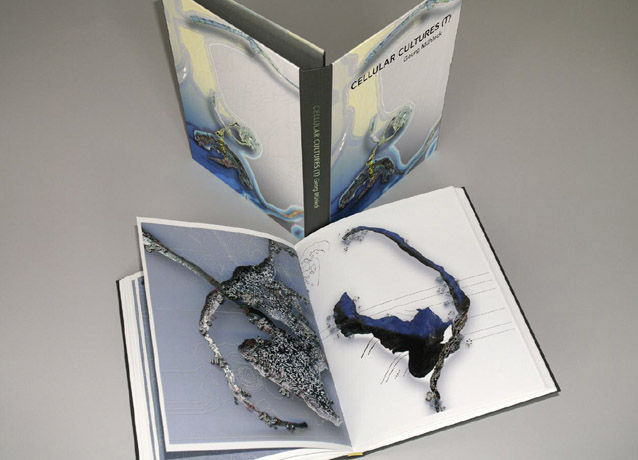
“Metasystem transition: subculture 2” 2009 , Archival pigment on Arches
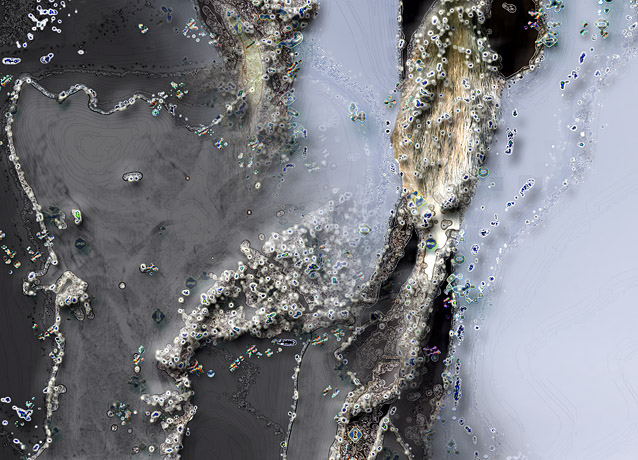
“inked kelpie 12b” 2018, archival pigment on Hahnemühle
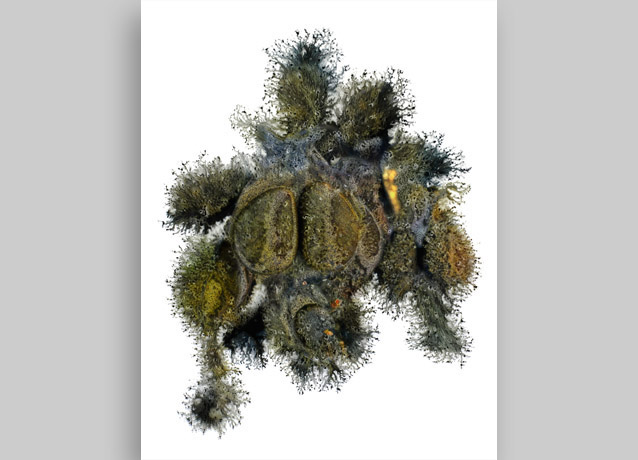
“sei 2” and “sei 1” 2002, archival pigment on Arches
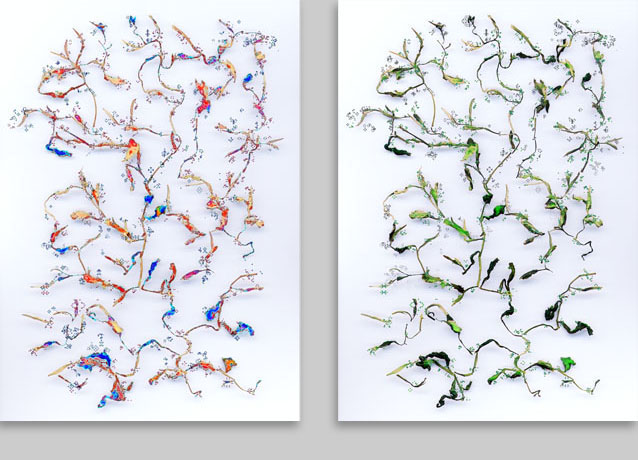
“inked kelpie 10” 2019, archival pigment on Hahnemühle
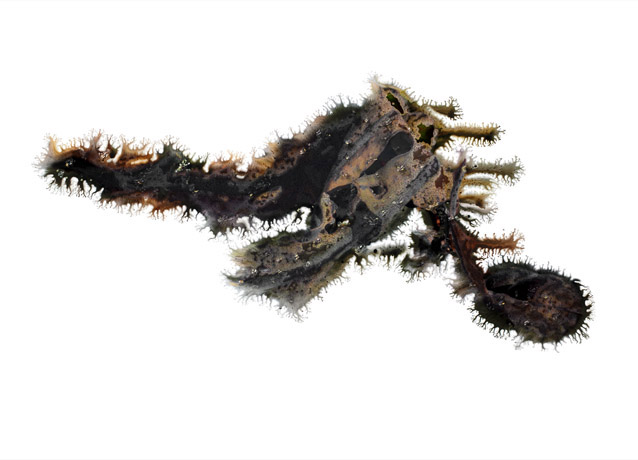
“Thinking with tea, my deer” 1998, print on fabric, poles, rope
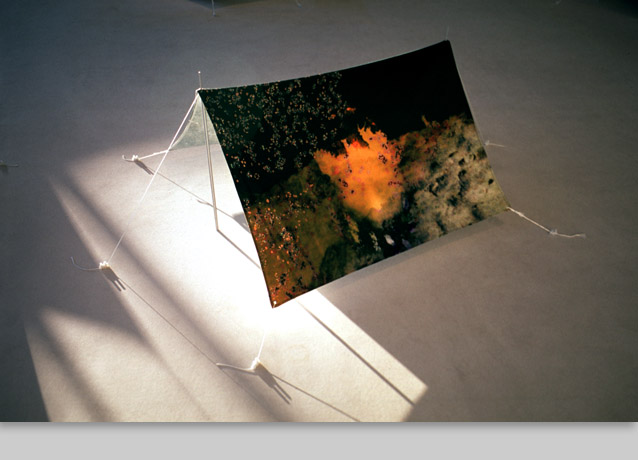
“caemborg (caspecies 3A)” 2014, archival pigment on Canson
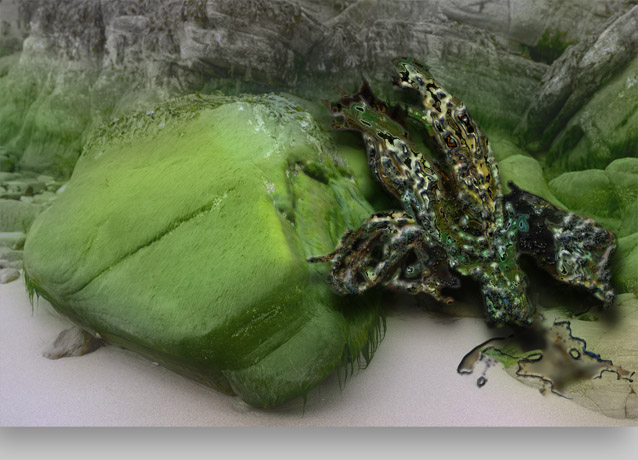
"fluid 54(k)" 2021, archival pigment on Hahnemühle 61x79cm, edition of 5 © Georg Mühleck
Note on the work process: The starting point for the fluid series have been photographs or scans taken from nature, their organisms serving as an ‘action space’ for cell cultures of synthetically generated life. Photography and algorithms create an image using computer models of Cellular Automata (cf. my work series Cellular Cultures-T, caspecies, and kelpies). Following the completion of these data graphs, some of them are subject to a process involving real, flowing ink. The digital work erodes under the impact of gravity on the ink. The sequence of this process is captured in photographs up to a point when the colour flow has become almost stagnant. One of the number of photographs is selected and printed with pigment ink on hand-made laid paper. What looks like painting, is in fact photography. The ‘digital fauna’ has continued to evolve. New beings, organisms, perhaps worlds have emerged. (Georg Mühleck, Juli 2021) ----------------------------------- "fluid" - Neue Wesen im Farbfluss, oder: die Einwirkung der Schwerkraft auf Tusche. Notiz zum Arbeitsprozess: Ausgangspunkt der Folge fluid sind Fotos oder Scans aus der Natur, deren Organismus als ‘Aktionsraum’ für Zellkulturen synthetisch generierten Lebens dient. Fotografie und Algorithmen finden zu einem Bild durch die Nutzung von Computermodellen Zellularer Automaten (siehe meine Arbeitsreihen Cellular Cultures-T, caspecies und kelpies). Nach Fertigstellung jener Datagrafien werden einige davon einem Prozess mit real fliessender Tusche ausgesetzt. Das digitale Werk erodiert unter der Einwirkung der Schwerkraft auf die Tusche. Die Abfolge dieses Prozesses wird fotografisch festgehalten, bis ein Punkt erreicht ist, an dem der Farbfluss nahe an einen Stillstand gekommen ist. Aus den entstandenen Fotos wird eines ausgewählt und mit Pigmenttusche auf Bütten ausgedruckt. Was aussieht wie Malerei, ist in Wirklichkeit Fotografie. Die ‘digitale Fauna’ hat sich weiterentwickelt. Neue Wesen, Organismen, vielleicht Welten sind entstanden. (Georg Mühleck, Juli 2021) ------- © Georg Mühleck - VG Bild-Kunst; mail@georgmuehleck.com; www.georgmuehleck.com; info@bildkunst.de; www.bildkunst.de
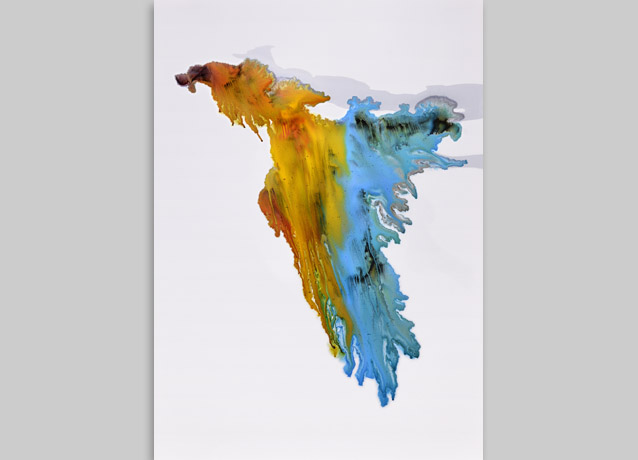
“Cellular Automata, chessmen” 1997, 32 Ilfochromes in programmed light boxes
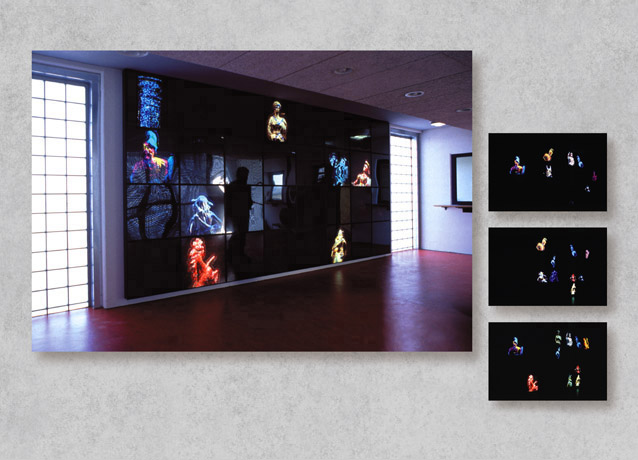
“State of soul, state of mind” Copigraphy RX 6500, Goethe House New York 1988
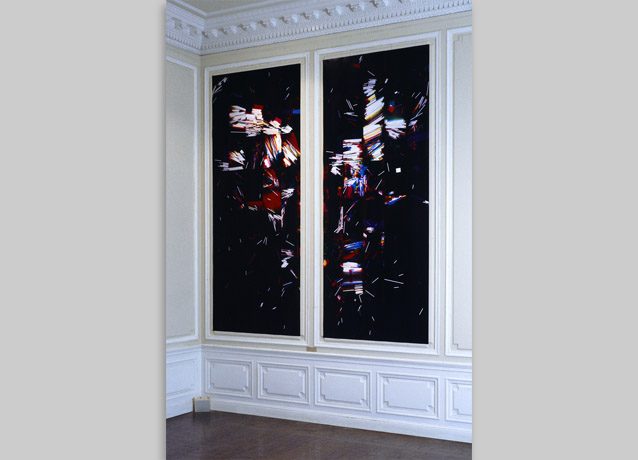
"fluid 38(k)" 2021, archival pigment on Hahnemühle 61x79cm, edition of 5 © Georg Mühleck
Note on the work process: The starting point for the fluid series have been photographs or scans taken from nature, their organisms serving as an ‘action space’ for cell cultures of synthetically generated life. Photography and algorithms create an image using computer models of Cellular Automata (cf. my work series Cellular Cultures-T, caspecies, and kelpies). Following the completion of these data graphs, some of them are subject to a process involving real, flowing ink. The digital work erodes under the impact of gravity on the ink. The sequence of this process is captured in photographs up to a point when the colour flow has become almost stagnant. One of the number of photographs is selected and printed with pigment ink on hand-made laid paper. What looks like painting, is in fact photography. The ‘digital fauna’ has continued to evolve. New beings, organisms, perhaps worlds have emerged. (Georg Mühleck, Juli 2021) ----------------------------------- "fluid" - Neue Wesen im Farbfluss, oder: die Einwirkung der Schwerkraft auf Tusche. Notiz zum Arbeitsprozess: Ausgangspunkt der Folge fluid sind Fotos oder Scans aus der Natur, deren Organismus als ‘Aktionsraum’ für Zellkulturen synthetisch generierten Lebens dient. Fotografie und Algorithmen finden zu einem Bild durch die Nutzung von Computermodellen Zellularer Automaten (siehe meine Arbeitsreihen Cellular Cultures-T, caspecies und kelpies). Nach Fertigstellung jener Datagrafien werden einige davon einem Prozess mit real fliessender Tusche ausgesetzt. Das digitale Werk erodiert unter der Einwirkung der Schwerkraft auf die Tusche. Die Abfolge dieses Prozesses wird fotografisch festgehalten, bis ein Punkt erreicht ist, an dem der Farbfluss nahe an einen Stillstand gekommen ist. Aus den entstandenen Fotos wird eines ausgewählt und mit Pigmenttusche auf Bütten ausgedruckt. Was aussieht wie Malerei, ist in Wirklichkeit Fotografie. Die ‘digitale Fauna’ hat sich weiterentwickelt. Neue Wesen, Organismen, vielleicht Welten sind entstanden. (Georg Mühleck, Juli 2021) ------- © Georg Mühleck - VG Bild-Kunst; mail@georgmuehleck.com; www.georgmuehleck.com; info@bildkunst.de; www.bildkunst.de
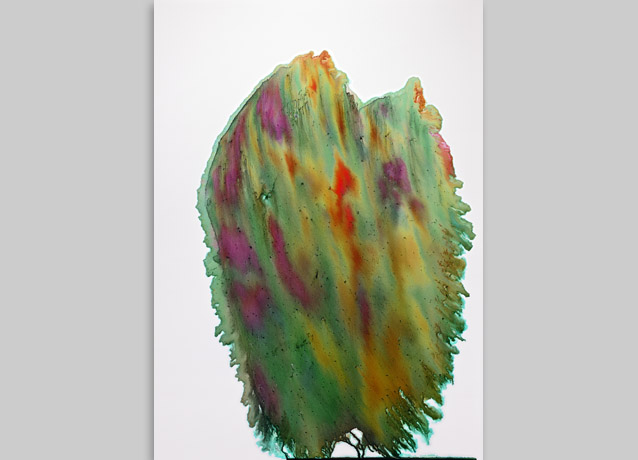
“kelpie 07 in rock” 2019, archival pigment on Hahnemühle
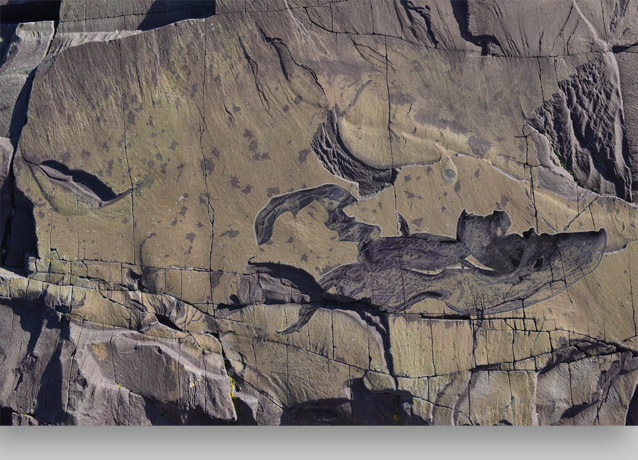
“inked kelpie 28_v2” 2020, archival pigment on Hahnemühle
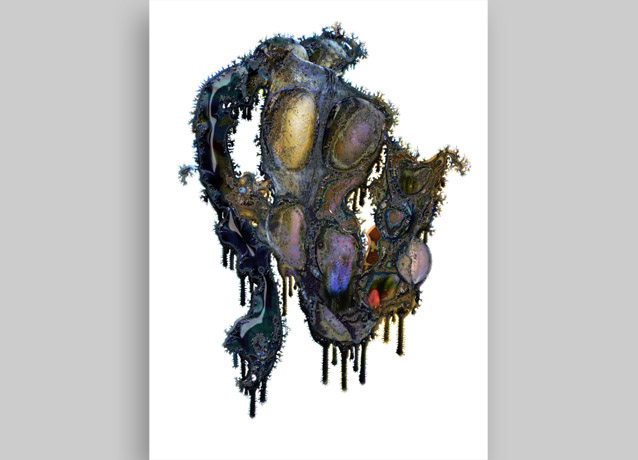
“knowledge & Camillo’s memory” 1998, print on fabric (tent)
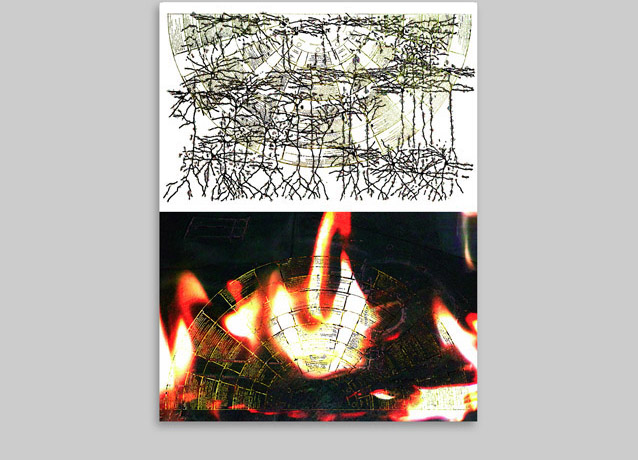
“Horizontal transformation of one element (No.J)” 1982, oil pastel on Arches
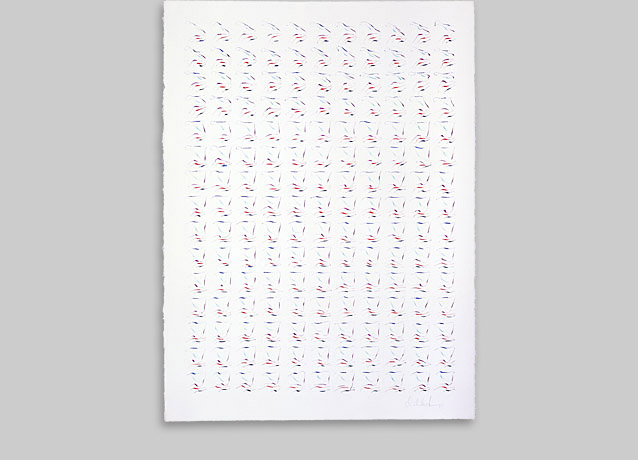
“74 degree shower diptych” 1981, oil pastel on PVC
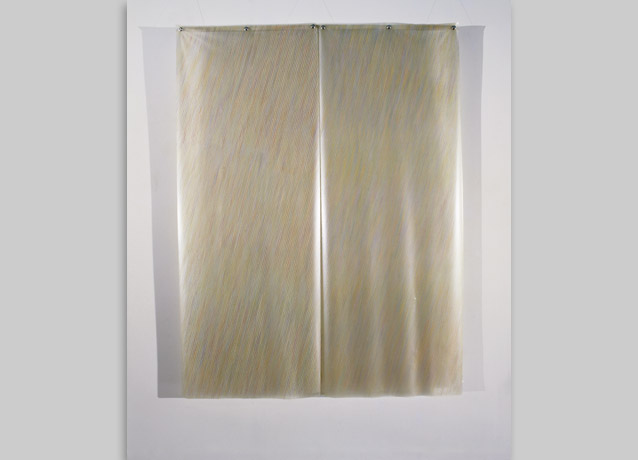
“I want you, I need you, I love you” 1990, giclée, aluminum
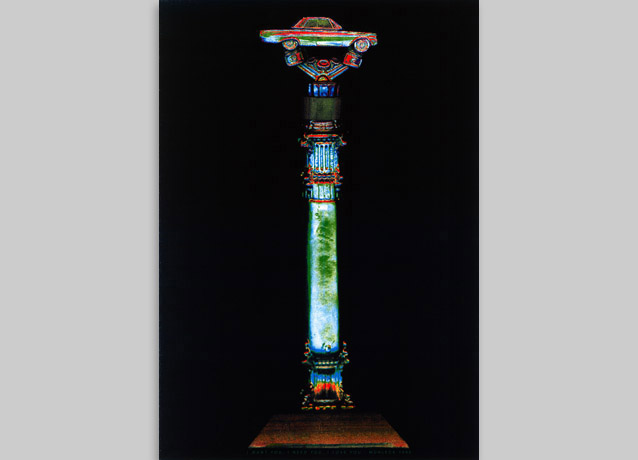
“(200) views for ID match” 1994, paper objects in colour offset/copigraphy
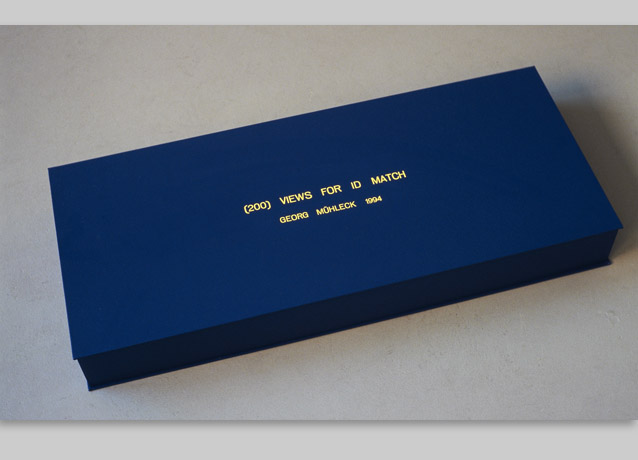
“Five heat fields” 1993, viable data
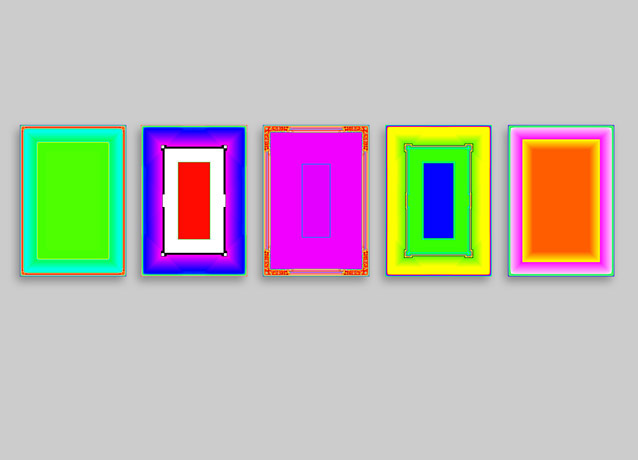
"Untitled Cloridorme No2" 1986, unique copigraphy RX 6500
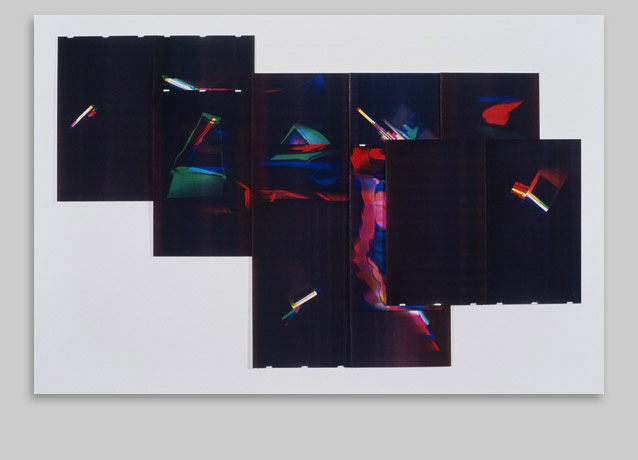
“Signal” 1981, oil pastel on tissue, plastic film, polyester wadding, aluminum foil
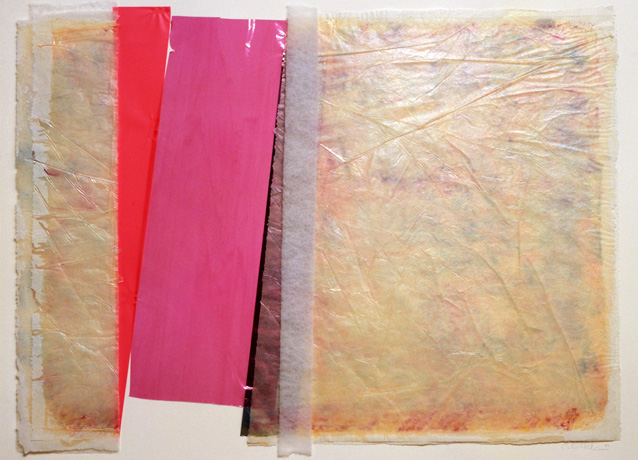
“Fünfzehn Weichspiegel-Sandwiches” 1981, Oil Pastel on tissue, polyester wadding, aluminum foil
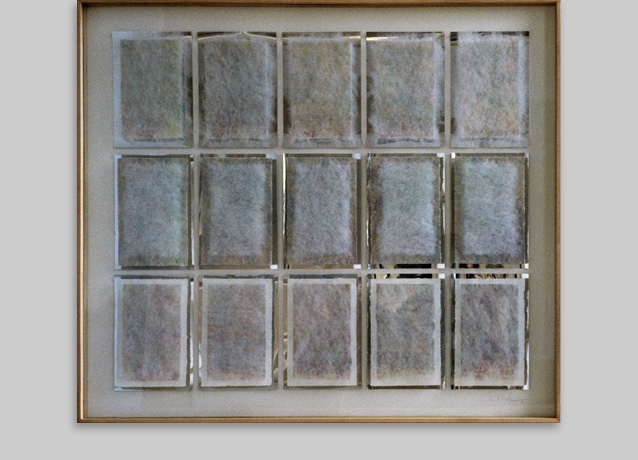
“sTEAmulus pond 2 — Subculture 2” 2008, archival pigment on Arches
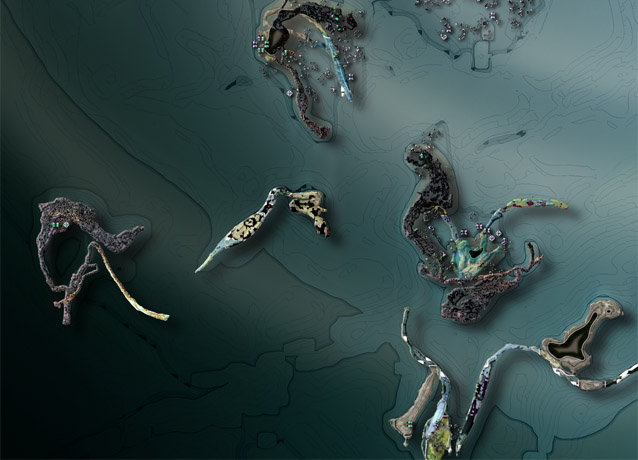
“Screen Heads” 1993, 85 Silkscreen Prints (detail of installation)
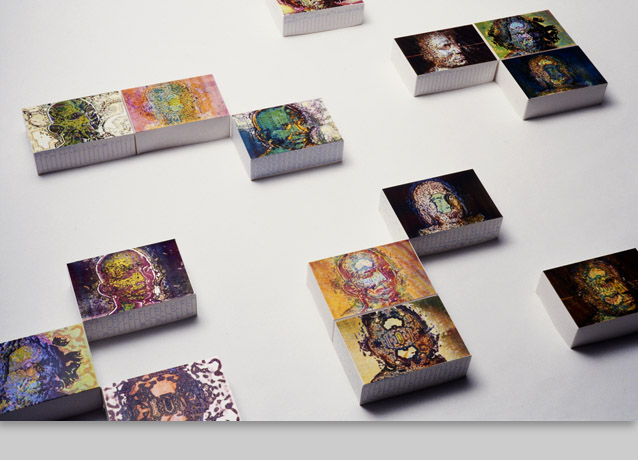
“Five vertical sandwiches” 1981, oil pastel, polyester wadding, Galerie Motivation V Montréal
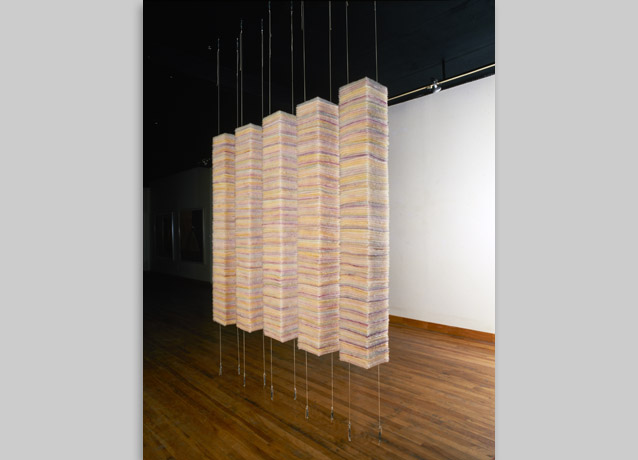
“Heat sources diptych” 1993, CLC prints, aluminum
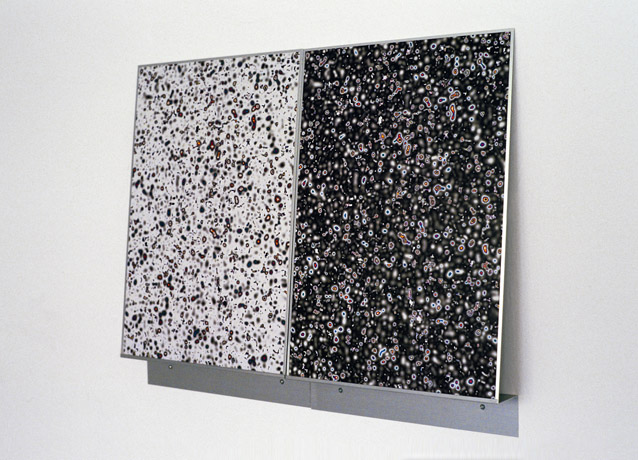
“All Neighbors Normal I” 1990-93, Cibachrome
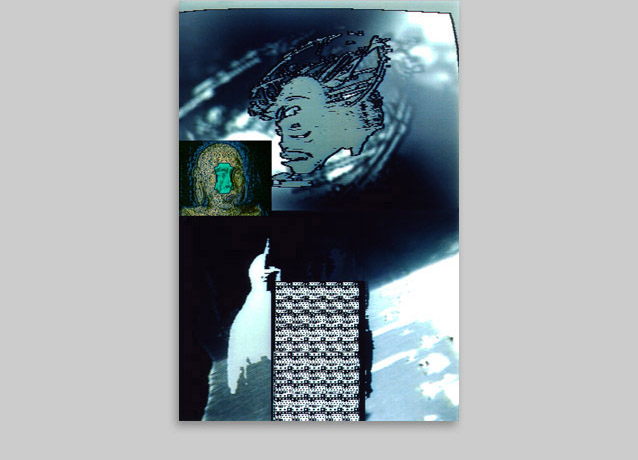
“Life Space and Simulation” 1999, Ilfochrome mural, Stadtsiedlung Heilbronn
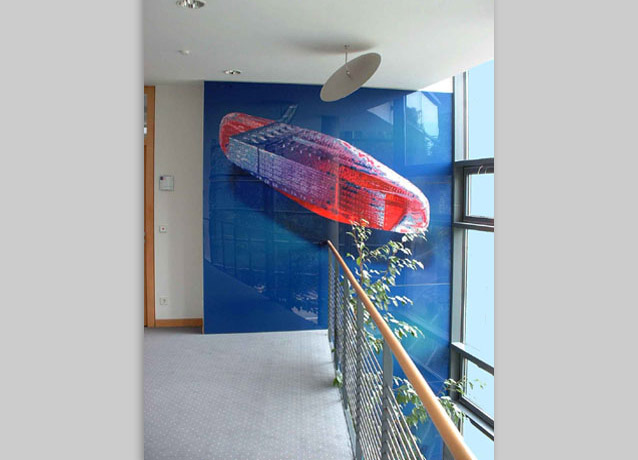
“stranded” 2017, archival pigment on Hahnemühle (photo)
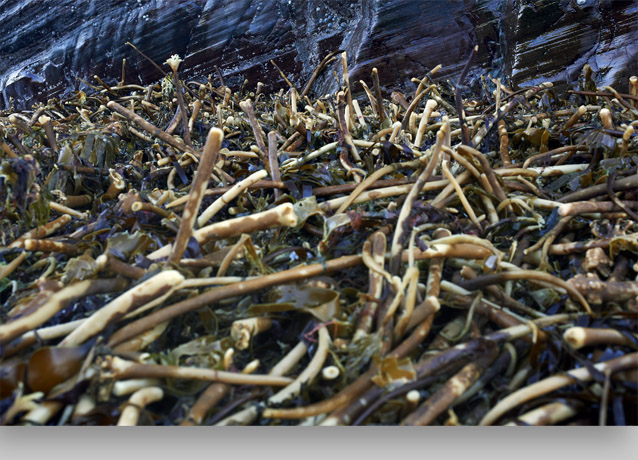
“16 x 2000 ccm of nothing” 1985, Copigraphy RX 6500
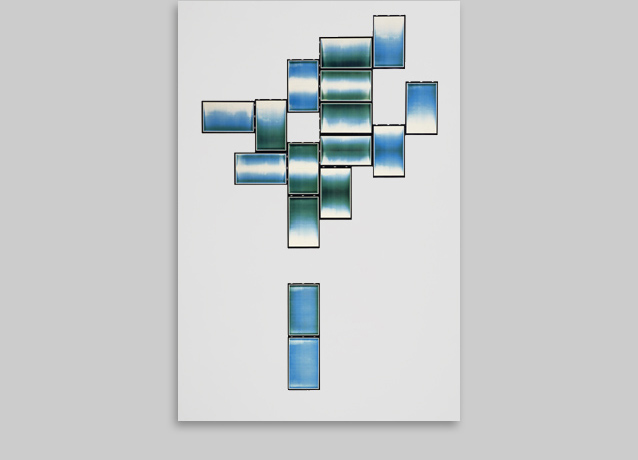
“Chopped book” 1990(?), artistbook
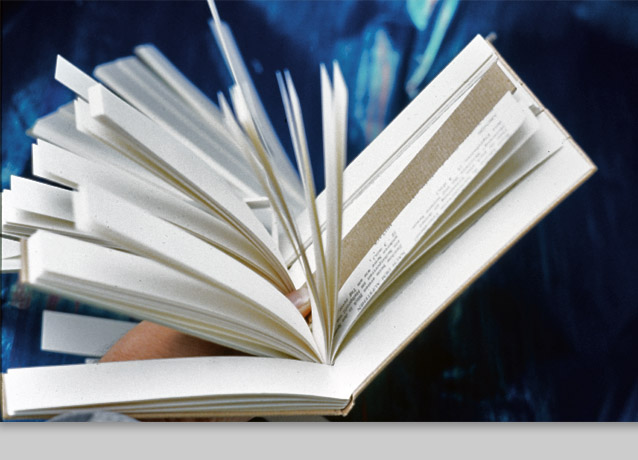
“Cellular Automata, chessmen” 1997, Ilfo/Plexi, JVA Schwäbisch Hall; architect Hansjörg Engelmann
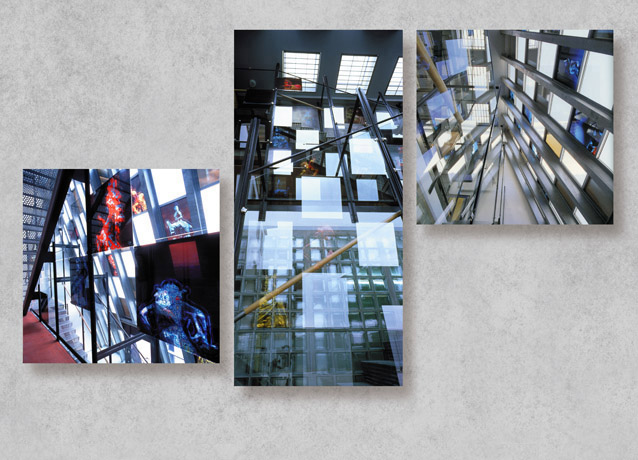
“hippoCAMPus” 1998, 15 tents; print on fabric, Galerie Manfred Rieker
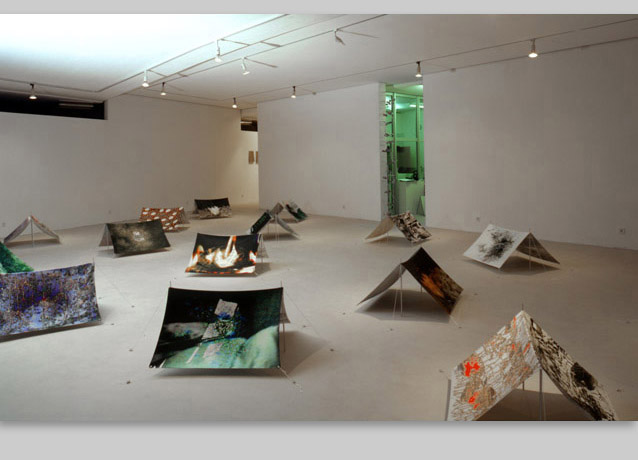
“mind bunker #14 tray” 2000, Translucent C-Print, acrylic tray
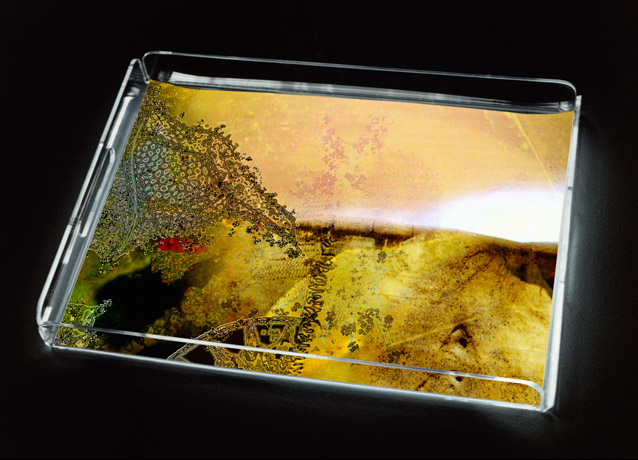
“inked kelpies 42+34_v3” (set 9) 2019, archival pigment on Hahnemühle
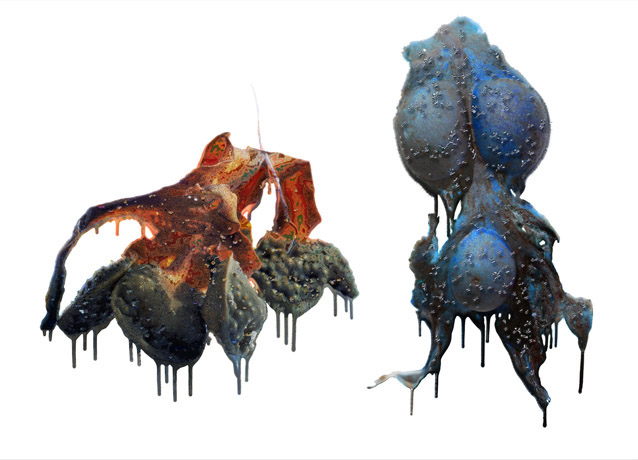
“sTEAmulus pond — Subculture 5” 2009, archival pigment on Arches
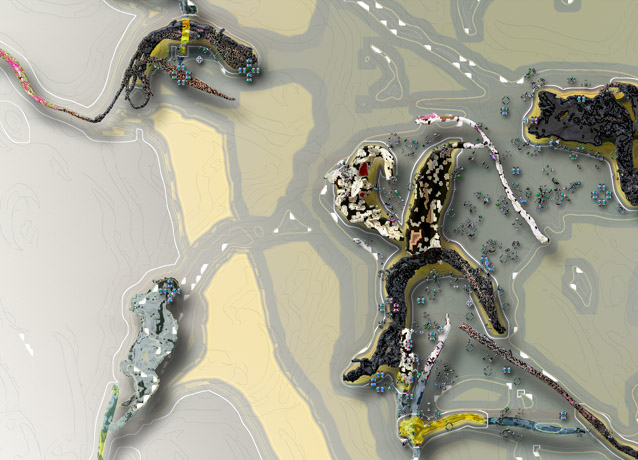
“Plastic coated triptych” 1981, Oil Pastel on tissue, polyester wadding, plastic film
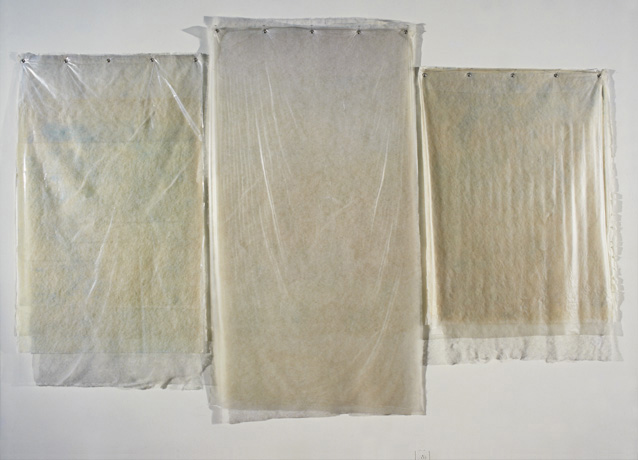
“Memory-Schiff” 2000, Ilfochrome/Plexiglass, stainless steel, cemetery Untergruppenbach
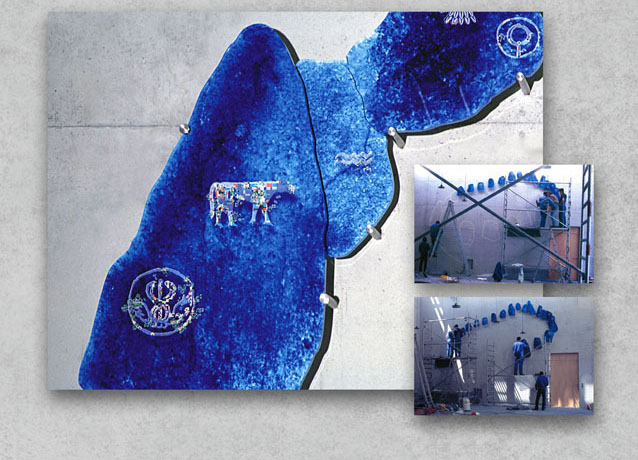
“connect 1+2” 2004-2008, archival pigment on Arches
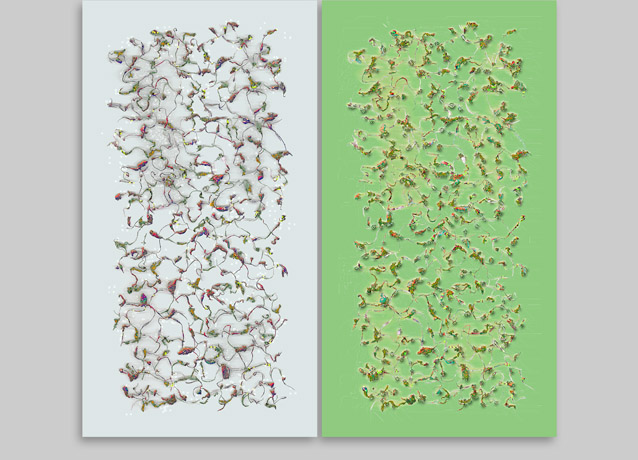
“The painting professor: pirate art process #...” (PP360) 1988, digital-thermal copigraphy CX-5000
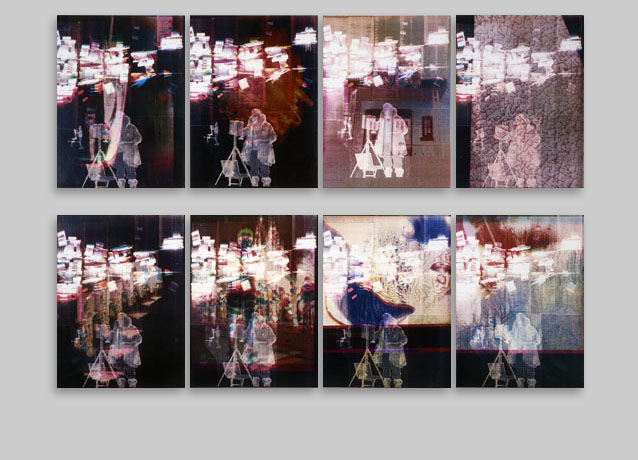
“Generator around crystals” 1993, CLC prints, aluminum
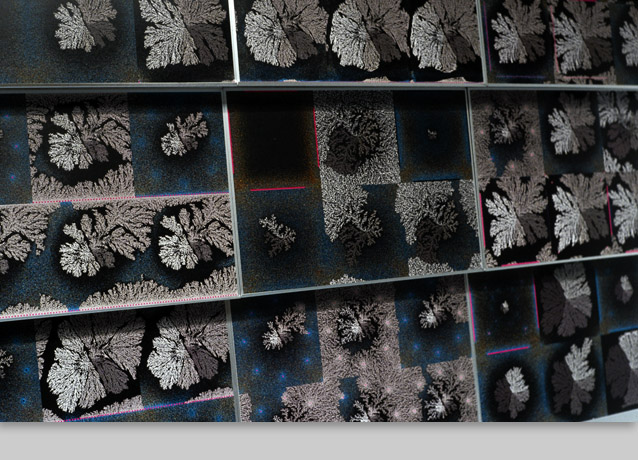
“rising horizon — copies of nothing” 1984, copigraphy RX 6500
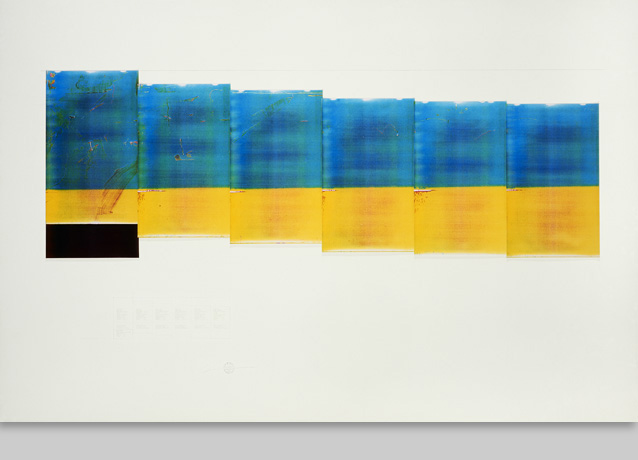
(unknown title1) 1982, Oil pastel on Arches
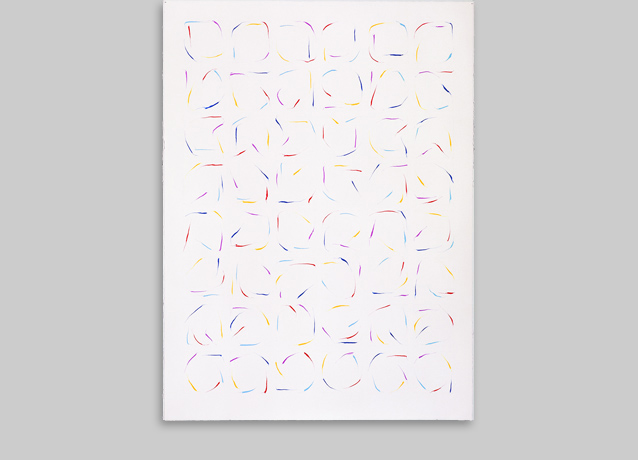
“language islands” 1995, CLC print transfers onto alucobond
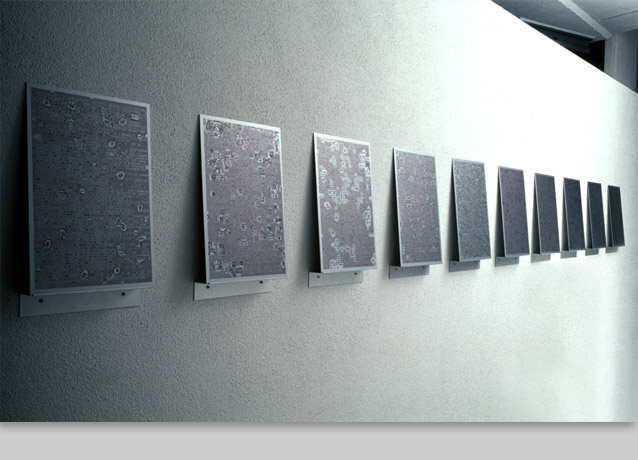
“Untitled Cloridorme No 4” 1986, Copigraphy RX 6500
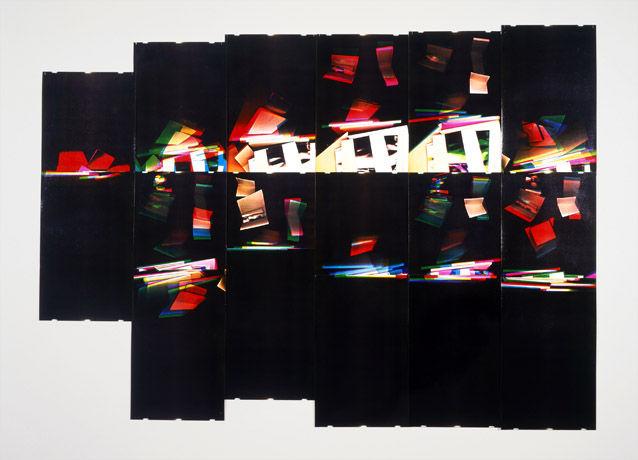
“M4-mind control” 1993, C-Print
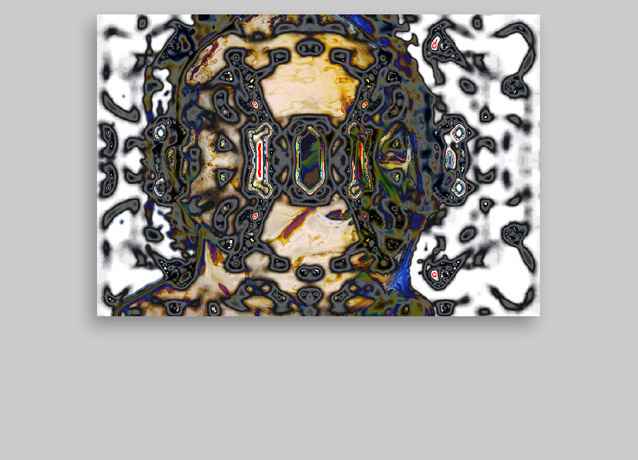
“Exposed Eye” (hippoCAMPus series) 1998, print on fabric, poles, rope
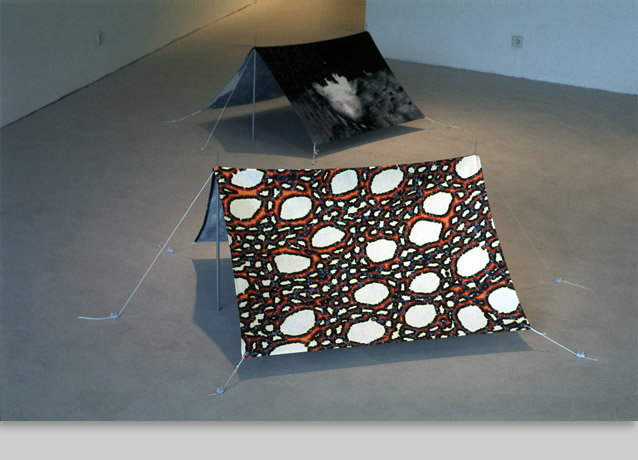
“Polymat” 2006, Ilfochrome/Plexiglas, Fraunhofer Gesellschaft; architects K.Lehmann, M.Schneider
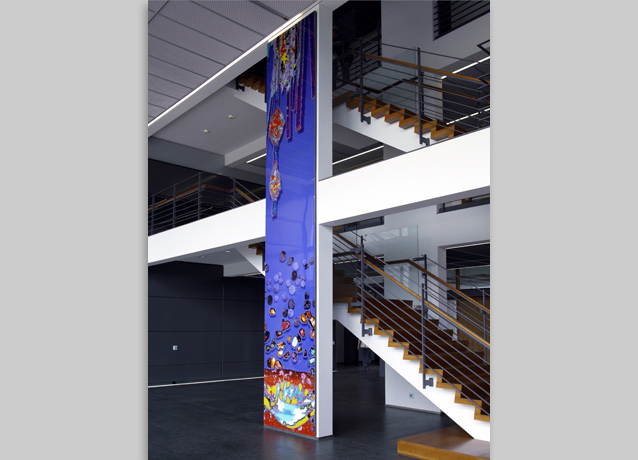
“Life rules over historic ground” 2004, The New Royal Infirmary of Edinburgh, UK
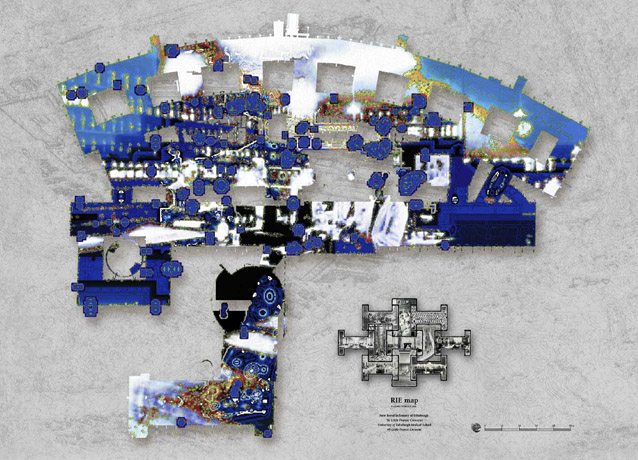
Part of “Enemat” 2007, Ilfochrome/Plexiglass, stainless steel
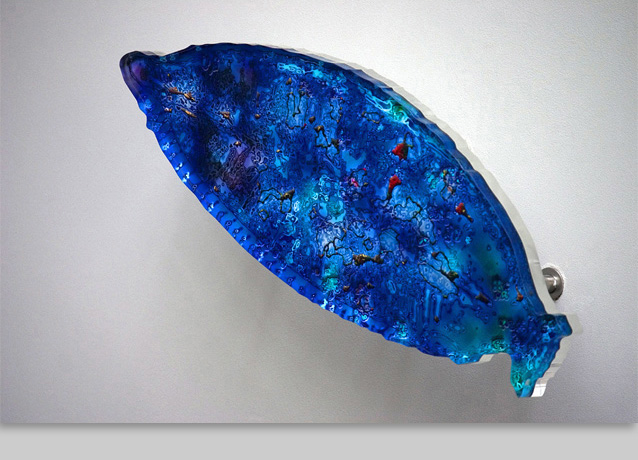
“mind bunker #13” 2000, Translucent C-Print in tray
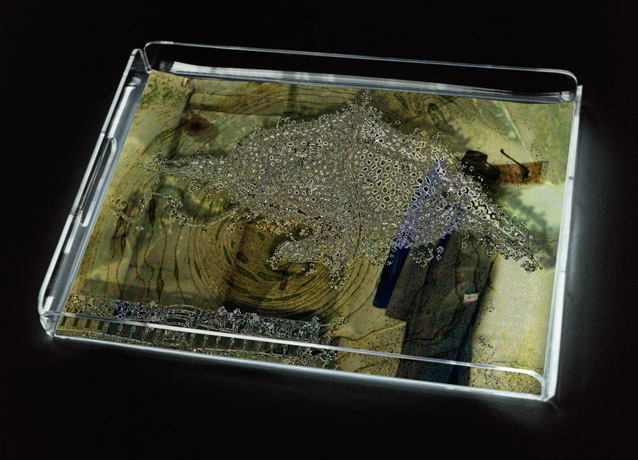
"Untitled light No2" 1986, unique copigraphy RX 6500
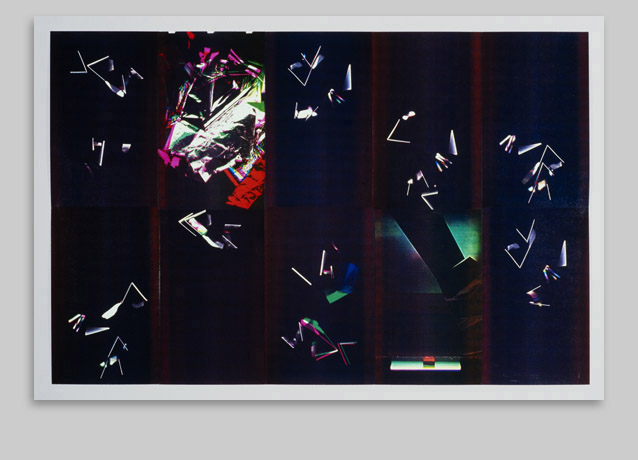
“Copy of nothing in October 1982 or: the air of the gallery #1-13” Copigraphy RX 6500
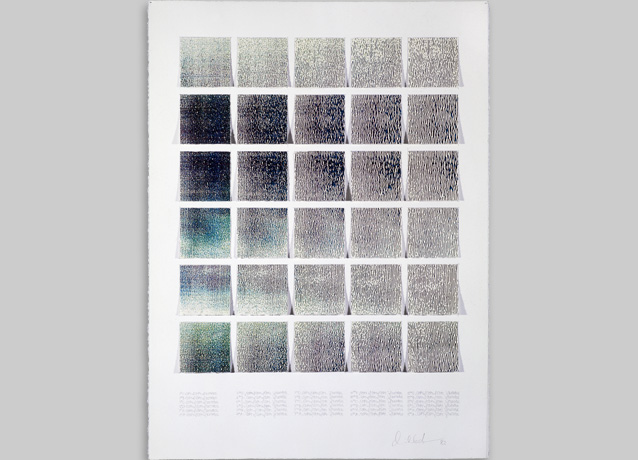


This archive presents works of art spanning four decades. During the 1980s analogous works were created. From the beginning of the 90s, realizations follow that focus on processing and themes in the digital realm.
The running slideshow is only a preview of the archive. A comprehensive collection can be found under “artworks” and “public art”. The archive contains all completed work series, current research is not present here.
∞
Dieses Archiv präsentiert Kunstwerke aus vier Jahrzehnten. In den 1980er Jahren sind analoge Werke entstanden. Ab Anfang der 90er Jahre folgen Realisierungen, die sich auf Verarbeitung und Themen im digitalen Bereich konzentrieren.
Die laufende Dia-Show ist lediglich eine Vorschau des Archivs. Eine umfassende Sammlung ist unter “artworks” und “public art” zu finden. Das Archiv beinhaltet alle abgeschlossenen Arbeitsreihen, aktuelle Recherche ist hier nicht präsent.
